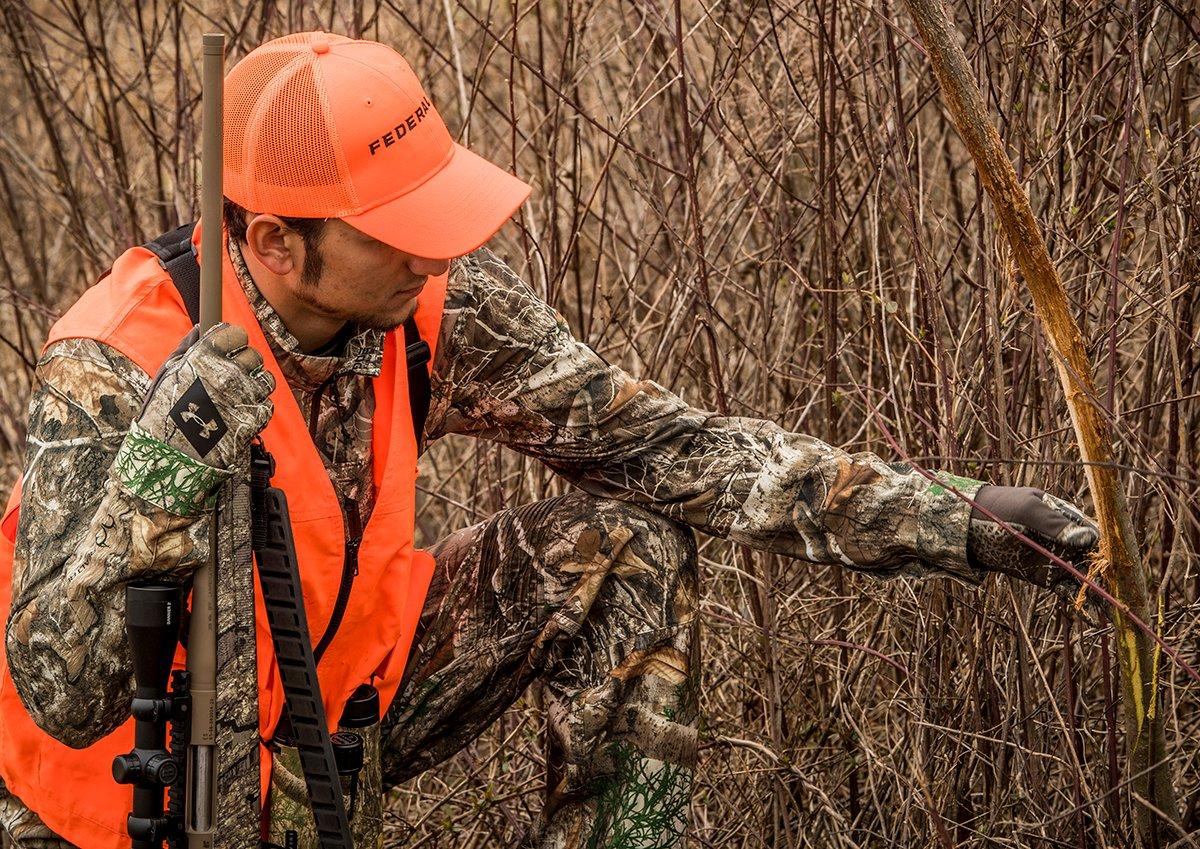Not all buck sign is created equal. Recognize the rubs that can tip you off to a mature buck's routine
Fresh scrapes are the most alluring buck sign in the woods during the rut, but rubs are more important to your season-long strategy. Here's how to place value on four types of rubs and how to determine which ones can help you pin down and kill a big deer.
Type: Ordinary Rub
Tree: Pine or cedar tree, 2 to 3 inches in diameter, or a hardwood sapling.
Skinny: If you find 500 rubs this fall, 400 will be on saplings and thin trees. Some studies show that bucks prefer to blaze ordinary rubs on aromatic cedar or pine trees. But they'll also readily thrash almost any sapling. Ordinary rubs pop up in September and continue through the rut. Six-pointers or a giant 10 might make them.
Hunting value: Low to moderate. Scattered ordinary rubs don't mean much, but clusters of 20 or 30 in a small area tell you a buck or bucks are using that spot. One of the deer might be a shooter.
Tactic: I'm not a big believer in rub lines, but sometimes rubs reveal a pattern. For example, if 70 percent of fresh ordinary rubs are blazed on the side of a ridge, you can surmise a buck or bucks are side-hilling rather than walking on the ridge top or down in the bottom. Hang a stand on a bench or flat on the hillside.
Type: Violent Rub
Tree: Sapling cluster, low cedar branches or thick bushes.
Skinny: A dry, brown thrashing of a bush or branches is weeks old and of no value. Scout for a second volley of thrashed or snapped saplings or bushes (some yanked out of the ground) from about Oct. 20 until Nov. 15, as bucks prowl and thrash to vent pent-up sexual energy until the first does pop into heat.
Hunting value: High during the rut.
Tactic: You should hunt on a ridge or in a creek bottom with fresh, ripped bushes and branches now through mid-November. The horny bucks that made those violent rubs are on the prowl, and one might slip up during daylight.
(Don't Miss: The Sixth Sense, Part I: A Whitetail's Secret Weapon)
Type: Rut Rub
Tree: Hardwood tree, 3 to 5 inches in diameter
Skinny: Look for these shiny big rubs to start popping up in your woods two to three weeks before the peak rut. They might have been made by a resident mature buck that is frustrated and ready to breed, or provide clues of a vagabond 8- or 10-pointer that has come from miles away, expanding his normal range to sniff for does.
Hunting value: High.
Tactic: The more shiny, thick rut rubs you find, the better. Strike quickly. Look for the wildest, most secluded cover in the area. You'll likely find more rubs there, because that's where Mr. Big stages a lot. Set a stand where the wind is right, and hunt it late in the pre-rut and into the peak.
Type: Signpost
Tree: Cedar, pine or hardwood tree or fencepost, 5 to 8 inches in diameter or even larger.
Skinny: Mature bucks blaze huge signposts in high-traffic spots where other deer can see them and veer over for a look and smell. Signposts become community scent wicks. Bucks of all sizes and does smell them and rub on pre-orbital and forehead scent. Generations of bucks often work the big rubs year after year.
Hunting value: Moderate.
Tactic: I have never set a stand over a signpost per se, but I've hung plenty on ridges and in bottoms with huge rubs. Many bucks will cruise through a sign-posted area some days this fall, next hunting season and the next, though their patterns will be unpredictable. Still, if you hunt a ridge or creek bottom with multiple signposts, you always have the chance to see and shoot a big buck.
(Don't Miss: The Sixth Sense, Part II: A Deer Hunter's Intuition)









